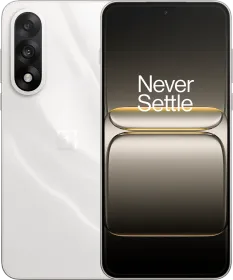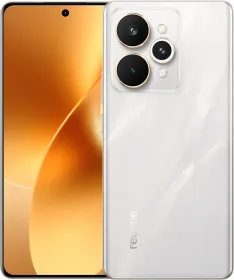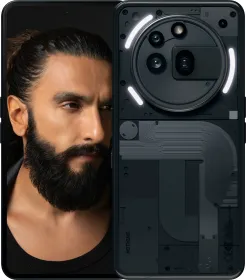Canon is one of the staple names in the camera market. The brand has seen immense popularity in India and global markets given its vast history in the optics space. Now, with the smartphones catching up and generative AI making it easier to create content, camera brands are having to work extra hard to keep up with the pace, or to justify their stand in the age of smartphones and artificial intelligence.
So, at the launch of Canon’s new EOS R50 V camera, I spent a few minutes with Canon India’s Vishesh Magoo and quizzed him about smartphone competition, Canon’s latest product, and how it makes life easier for creators. During our conversation, we also discussed whether Canon thinks artificial intelligence is something to be wary of and how the brand is leveraging AI in its products and services.
During the conversation, Magoo gave some interesting takes on different aspects of the camera department, what goes into the development of products like the Canon EOS R50 V, and, of course, where he thinks the creative world is headed.
On Competition With Smartphones
When asked about how fast smartphones are being developed and if players like Canon see it as a threat to their legacy, Magoo gave a very interesting take, saying that cameras have survived many waves in the tech industry, so it will survive the competition against smartphones as well.
Further, he mentioned that cameras like the EOS R50 V are usually the step up from smartphones. “We believe that smartphones are the gateway to photography. Once you know the craft and you want to elevate, that’s when you think of professional cameras, that’s where you think of brands like Canon.”
When asked about his take on smartphone brands putting wedding-specific features in their cameras (weddings are one of the biggest markets for Canon), Magoo said that despite all the efforts, no professional wedding photographer can be seen using smartphones. “They (smartphone brands) are trying, and we wish them all the very best,” Magoo said.
On Generative AI and Canon’s Integration Of AI Features In Products
When asked about what Canon, as a brand, is doing in terms of integrating AI in its products, the team said that Canon has been using AI for a very long time, and now, with the new developments, it is only getting better.
Confused? So was I until the exec elaborated. Basically, what Canon wants us to know is that AI in cameras is not a new thing. Autofocus capabilities are a good example of that. “First came autofocus, then eye detection, face detection, profile detection, and so on,” he said.
“So, how we like to see it is that AI is evolving with time, and autofocus in cameras is a very good example of that. We were ahead of the curve with autofocus, so we plan to remain ahead with whatever the next development towards AI in cameras.”
On generative AI, Magoo said that it is fun to play around with, but not good enough to be used in a commercial space. He also mentioned that the joy that clicking a good photo from a camera gives you can not be replicated by any AI. “It is fun to play around in a personal space, but I don’t think it’s good enough to be used in the commercial space. It can never become a norm of the industry,” Magoo said.
Further, he gave an example of playing the guitar to support his latter point. “Let’s say I like to play the guitar and make music from it. Now, AI can create music today, but it can never replicate the joy of playing the guitar with your own hands. Similarly, while AI can generate good enough photos, it can never replicate the joy of using a physical camera to create art.”
ON THE NEW EOS R50 V
During the product keynote at the Canon event, there were many first-in-class features that I noticed and was intrigued to ask more about it to the camera team. Three of the highlight features for me with this camera were the direct plug-in and stream feature, which allows users to not only share footage directly from the camera, but also connect more devices and stream directly from the EOS R50 V. The Second feature that caught my attention was the new zoom tech.
With the Canon EOS R50 V, Canon has not moved the zoom to the body of the camera, instead of the lens. And lastly, the third feature that caught my attention was the record button. Canon has changed the placement of the record button, which brings the video recording button to the front of the camera’s body.
I started by asking what the team’s favourite feature for the camera is. Here, Mr Magoo joked that this is the “toughest question I could have asked him,” further saying that the easy streaming feature is probably the most useful one for creators, which is the new camera’s target audience. However, he further mentioned that he can’t choose one favourite feature. He said that apart from this, there are many other built-in features like slow motion, time-lapse, and more. “And the best part, it is also pocket-friendly and light to carry around,” Magoo said.
Is Canon EOS R50 V a wedding camera?
To this, Magoo said that this camera is not made for that market. This is more focused on the creators, as the wedding photographer is more of an advanced level. “Weddings are a different market altogether. In India, weddings are a festival, and you will not see weddings like these anywhere else in the world. Which also makes it super challenging for the photographer. That equipment (wedding cameras and accessories) is very “pro grade.” Weddings are a different ball game altogether,” he said.
However, Magoo did say that this can be used for wedding photography. “Can you drive an off-road car on the highway? Absolutely! It is not meant for it, but it will do the job perfectly fine. Similarly, the EOS R50 V is not meant for weddings, but it can do a pretty good job at wedding shoots as well.”
On The New Zoom Mechanism
One of the most interesting features of the new Canon EOS R50 V is the zoom functionality. Canon has removed the zoom function from the lens for this camera and put it in the body of the camera itself, similar to the digicams that were more prominent earlier.
Will this new Zoom mechanism work with all lenses? The Canon executive told me that this will work on all the PZ series lenses that will come from now on. He further explained that this is a hardware update and uses what is called a “PZ Adapter” to enable zoom directly from the camera’s body.
“This feature will work with all the PZ series lenses that are coming soon. So for this we are using a PZ adapter, which is a hardware element. Any lens that does not have the PZ adapter will not be able to use this feature. So older lenses will not be able to zoom in with this new feature,” the Canon executive said.
On The New Record Button Placement
When I quizzed the Canon team about this record button being an inconvenience for those who are already used to the universal placement of the video recording button, Magoo said that the logic is that the person coming from a smartphone to a camera will not have any muscle memory for the record button. So the idea was to make that transition easier for all the budding creators out there.
“The logic behind it was that this will make the transition easier since the smartphone user has a habit of having the button on the front. This design also allows you to have the viewfinder and the record button on the same side, which is more convenient for any user,” Magoo said.
Key Takeaways
So during my conversation and after experiencing the new Canon EOS R50 V camera, I had a few takeaways. First and foremost, despite many professional photographers and creators swearing by the smartphone camera, the camera brands are still not considering smartphones as a real competition.
And while that may be right since cameras are more of a pro-grade device, the ease of access and usability that smartphones offer is unmatched. Furthermore, the quality of photos and videos is catching up too fast. However, products like the EOS R50V, which have many smart features and try to mimic the ease of use of a smartphone as well as it can, will definitely help make cameras more accessible to aspiring creators or those who want to level up.
But then comes the issue of cost. The Canon EOS R50 V is priced at ₹75,000 in India. Add to that the cost of a lens, memory card, and more, the cost comes out to be much higher than an iPhone, which starts at a price of just ₹65,000 (current price on Amazon). But this is a good first step in terms of appealing to more amateur creators.
Secondly, generative AI or AI in general is something Canon is not looking at. While the brand is absolutely spot on in stating that autofocus is a good example of how AI has evolved in the camera space, I didn’t hear anything substantial in terms of leveraging or tackling generative AI. While in my conversation, I was given the reasoning that this is something which is “good for fun,” they said it to someone who uses generative AI for work purposes on a regular basis. So the responses around generative AI felt a little ignorant.
And finally, the placement of the new video recording button. It did make sense that someone transitioning from a smartphone to a camera would find it easier to use the front-placed record button. However, anyone transitioning from a phone to a camera already has a massive learning curve ahead of them, so learning how to press one more button doesn’t sound too much of an inconvenience.
































